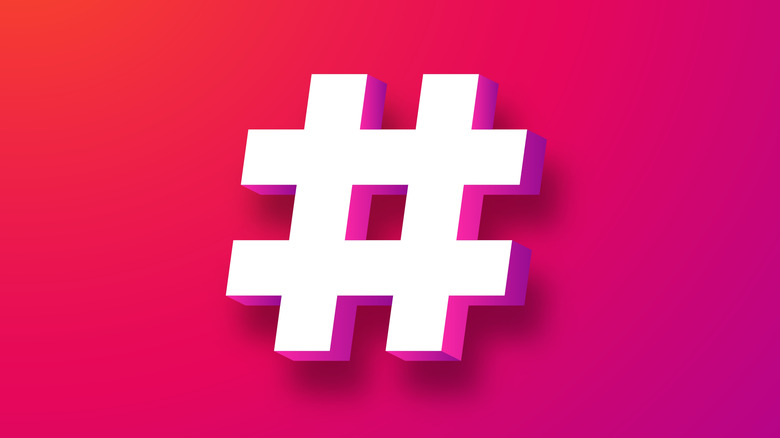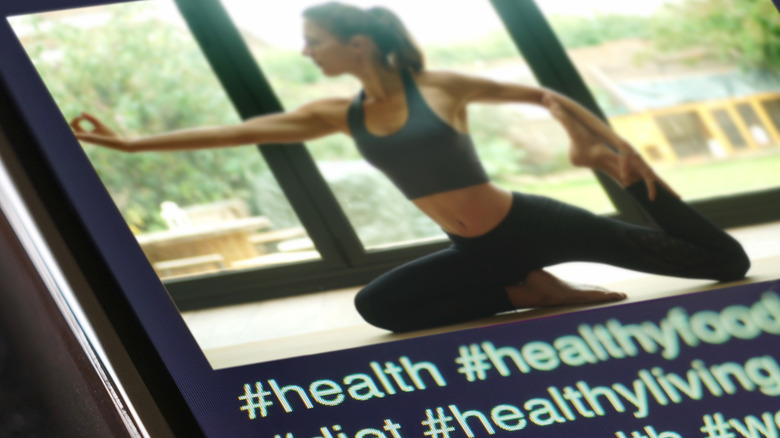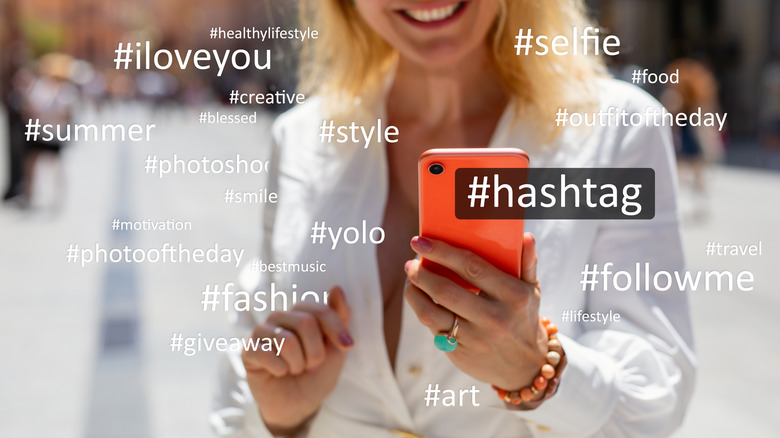Why Did Instagram Discontinue The Ability To Follow Hashtags?
If you've noticed that posts from your favorite hashtags have mysteriously vanished from your Instagram feed, you're not imagining things. In late 2024, Instagram quietly pulled the plug on the ability to follow hashtags — a feature that had been around since 2017 and was once a popular way to track interests and discover niche communities.
So, why the change? While Instagram did not make an official statement explaining the move, it appears to be part of a broader effort at improving content quality and cutting down on spam. Over time, the hashtag-following feature became a magnet for irrelevant posts, bots, and clickbait, altogether making your feed messier, not better. Plus, with the algorithm doing more heavy lifting when it comes to curating what you see on Instagram, hashtags just weren't pulling their weight anymore.
Let's break down exactly what changed, why it matters, and what other ways you can still use hashtags (yep, they're not completely gone).
Why you can't follow hashtags on Instagram anymore
When hashtags first launched, they were a simple but effective way to discover new content. Following something like #TravelPhotography would fill your feed with dreamy landscapes from a wide mix of creators. #MinimalistHome served you cozy interiors and DIY inspo, minus the influencer overload. It was also a clever shortcut to the content you actually cared about; no strings (or full-on follow) attached.
But as with many good things on the internet, the vibes got hijacked. Hashtags became too easy to game. Bots, spam accounts, and clout-chasers started stuffing irrelevant posts under trending tags to boost visibility. Even well-meaning users began overloading their captions with hashtags in hopes of getting discovered.
Instagram tried to clean things up. It axed the "Recent" tab during the 2020 U.S. election to stop the spread of harmful content, then brought the same tactic back in 2022 to fight spam. But reactions were mixed — many users felt it made it harder to discover fresh content — and the fix didn't address the root problem. Rather than pouring more energy into policing it, Instagram made a choice: remove the feature altogether. The update was quietly rolled out on December 13, 2024, with notifications shared directly within the app.
Can you still use hashtags on Instagram?
You can still search hashtags, tap through top and recent posts, and add them to your own content to help it get discovered. What you can't do anymore is follow them like you would a person or page. That means no more hashtag-curated content casually dropping into your feed. For creators, that's a bit of a curveball. Hashtags used to be a low-effort way to grow your audience. Now, with that stream of discovery gone, you'll need to lean harder on Reels, smart captions, and the almighty Explore page to get noticed.
It's all part of Instagram's broader rebrand. The platform's leaning into personalized feeds, powered by algorithms that actively learn your preferences by observing what you engage with (or don't). So instead of throwing hashtags at the problem, Instagram is encouraging a more holistic (and organic) approach to building and engaging an audience.
Even Instagram CEO Adam Mosseri has said it: hashtags aren't a growth hack. In his words, they "help categorize content, but they don't guarantee distribution." In plain speak? What matters most is your content and how people engage with it. So if you're missing that personalized feed of travel inspo, dog memes, or obscure vintage finds, you'll have to manually check in now. Or just hope Instagram's algorithm knows you that well.
How to get discovered on Instagram without hashtags
Hashtags might not be the magic bullet they once were, but your content doesn't have to vanish into the void. Here are some tips on what actually works, as recommended by Instagram's own CEO.
Start with search. Instagram's search tool now behaves more like Google's. Instead of relying only on hashtags and usernames, it now surfaces posts based on actual keywords. That means if someone types in "easy meal prep" or "best skincare for oily skin," your reel with that exact phrase in the caption might show up, even if you didn't use a hashtag.
To boost your chances of showing up in those results, write captions like a real person would search. Swap vague one-liners for more specific, natural phrasing: think "What to do in San Francisco this weekend" instead of just "#weekend." Also, don't overlook Instagram's alt text feature. It's built for accessibility, but the keywords you include help Instagram understand what your post is about.
Engagement also plays a bigger role. Comments, shares, and saves help teach the algorithm what resonates, and that extends beyond just the post. Instagram is starting to pull context from captions and conversations happening in the comments, so how people interact with your content really counts.
Then there are suggested posts. If you've seen content from accounts you don't follow sprinkled through your feed, that's Instagram's recommendation engine at work. If your post aligns with what someone's already engaging with, it might earn a spot in their feed.
At the end of the day, if you're creating content people genuinely care about, you've got a shot at reaching them, even if they've never heard of you before. Instead of Hashtags, focus more on clarity, keywords, and building engagement that tells the algorithm you're worth watching.



